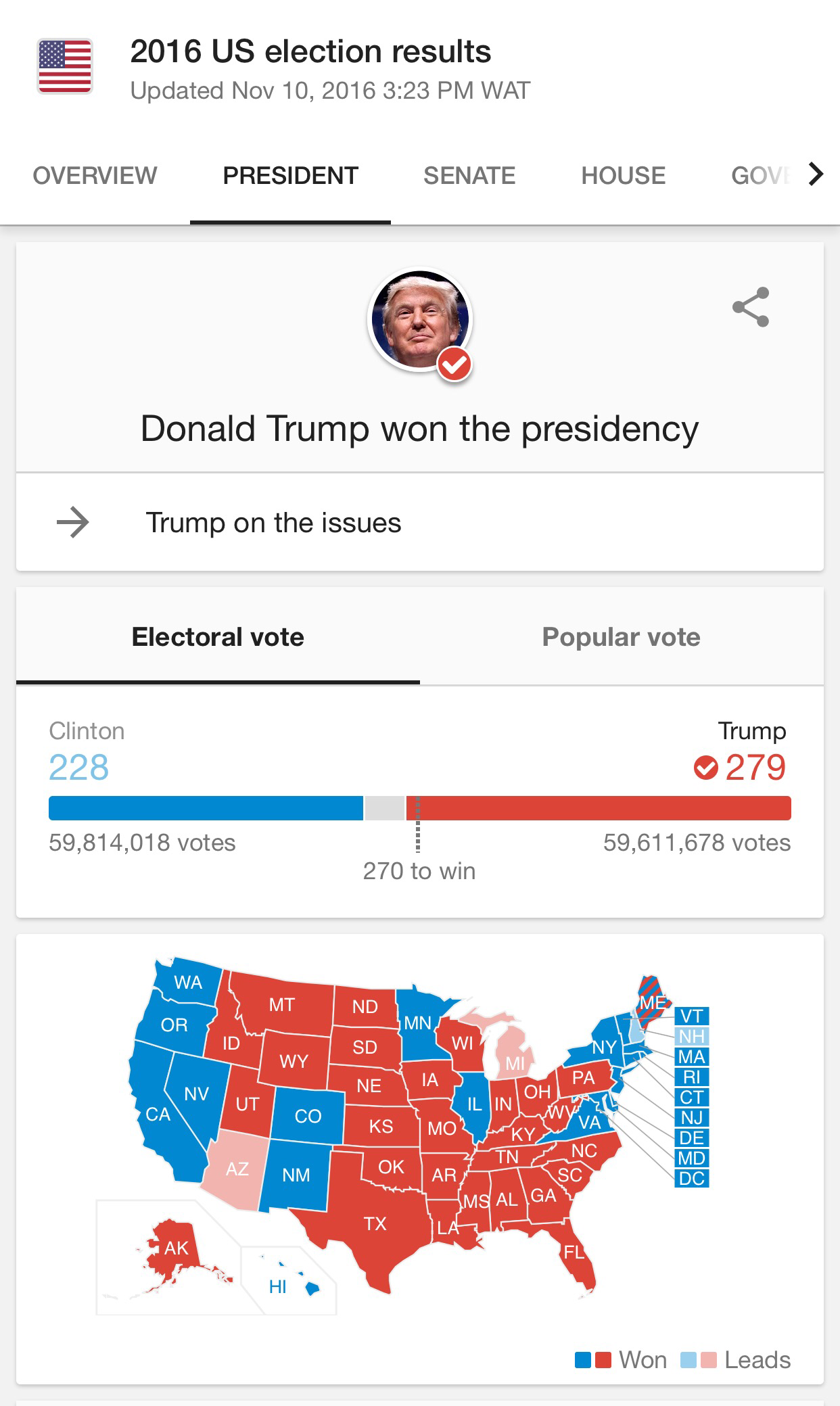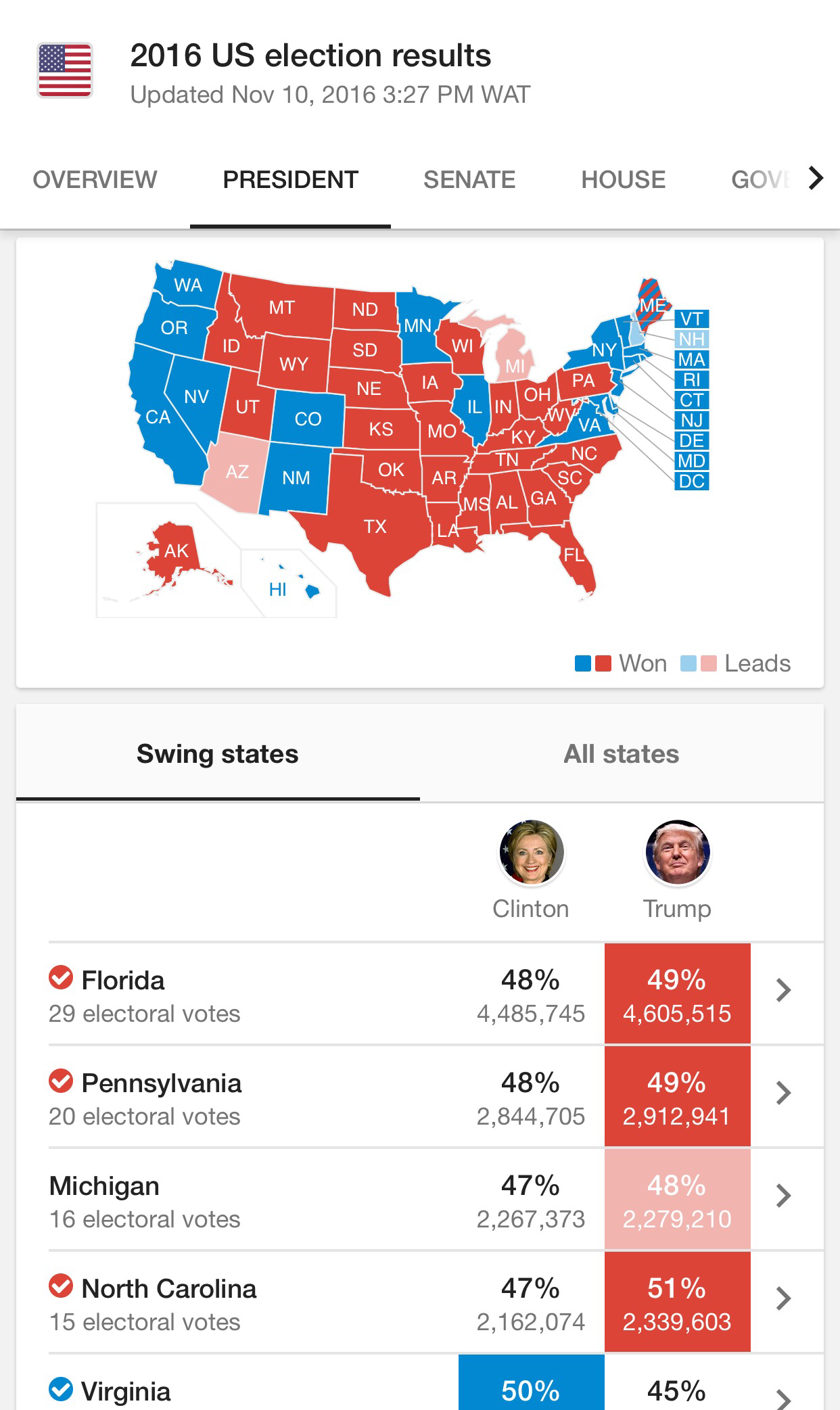Hillary Clinton Actually Got More Votes Than Donald Trump – But He Still Won The Election

Hillary Clinton actually got more votes than Donald Trump – but because of the electoral system, he won the presidency
Clinton has become the fifth US presidential candidate to finish ahead of her rival in the popular vote, but to still lose the election overall.
As of 3pm GMT, Clinton had won 59,299,381 votes nationally. Trump, however, had only won 59,135,740 – 163,641 votes less than the Democratic candidate.
This is because of how the US electoral system works – in theory, according to NPR’s calculations, it could be possible to win a US presidential election with less than 30% of the popular vote.

So how does the US election system work?
In the US, candidates are competing to get the most electoral votes rather than most of the popular vote.
Each state in the Electoral College has a minimum of three electoral votes no matter how small the state is. Other states like California have more than 50 electoral votes.
If a candidate gets the majority of popular votes in a state, they win *all* of that state’s electoral votes. Even if they only win in that state by one vote, they get the whole pie.
So, in this way, a candidate like Trump can win entire states with really narrow majorities.
No, despite this being possible it is still incredibly rare. This is because elections are rarely as close as this one was.
Here are the four would-be-presidents Hillary is joining in losing the election even though they got more votes.
Al Gore, who lost to George W Bush in 2000 by five electoral votes even though he won the popular vote
Grover Cleveland, who lost to Benjamin Harrison in 1888
Samuel Tilden, who lost to Rutherford B. Hayes in 1876
Andrew Jackson, who lost to John Quincy Adams in 1824
Doesn’t anyone want to change this system?
Well, the last time the Electoral College system was thrown up for serious debate was in the 1960s.
A resolution was proposed at the end of the decade calling for the direct election of the President and Vice President, with a run-off being required when none of the candidates received more than 40% of the vote.
It actually passed the House in 1969, but failed when it was put before the Senate.
Nothing has really come close to reforming the system since. However, we have a feeling this election could change that.



